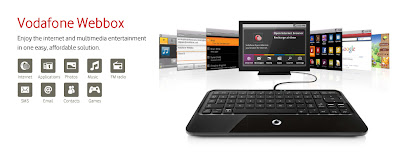The Mobile Race
The mobile
spec-hardware race continues apace, if anyone wondered what improvements could
be made to smartphones, then recent rumors show just where it’s headed. It was
only this year that we saw the introduction of a 720p display in a Sony Xperia
smartphone and now HTC has gone ahead to release a 1080p smartphone display
beating Sony and the likes of Samsung as they look to launch a new flagship
early next year or maybe with the 2012 Nexus.
It
is no secret that 1080p displays could be the new norm in the flagship race
next year. However, how far can the boundaries keep being pushed before the
difference to the average consumer becomes negligible?
We already have a 5-inch
1080p JDI display with 443PPI pixel density. The 342PPI pixel density display
of the Xperia S is one of the best we’ve seen and unless you have your nose to
the screen you’d never really need anything better. I still can’t wait to see
how such a high PPI and 1080p works and the toll it has on the battery life.
How many of you run
anything greater than a quad-core PC? We’d imagine it is very few. It will be
the same for the mobile market – yes, the chips will get more efficient,
fabrication sizes will decrease – but we doubt we’ll see more processor cores
and higher clock speeds will massively increase until battery life is much
improved. I am glad that the RAM has reached 1GB and I can’t wait for the day
when it will be at around 2GB (I know Samsung you working on this) for that is
what really matters and not the number of cores.
Moving on to cameras,
smartphone camera technology is fast rivaling point-and-shoots and for many
people photos taken on their smartphones are ‘good enough’. Yes we complain
about noise, sharpness and most of us would love to see a return of a xenon
flash on a Sony Xperia. But let’s get real, most people don’t print huge
canvases of their smartphone pictures. They’ll use it to share onto social media
sites and that’s it.
There is one
fundamental area where smartphone technology has stood still and that is
battery life. Whilst we’ve seen seismic shifts in most other components of
smartphone technology, the same cannot be said of battery life. Back in the
day, battery usage on feature phones weren't even a consideration for most
people as they just lasted for days. Fast forward to today and it’s generally
accepted that you need to charge your phone every night. This is never a good
experience for first time smartphone users and the old timers but soon you
learn how to walk around with your data cable and how to manage the screen
brightness just to get maybe half a day of usage. Newer display technology and
battery tech are critical hence need for more R&D and collaboration.
We’d love to be able to
get even two solid days usage out of a modern smartphone – including tethering,
GPS, watching movies etc. We’re a long way off this for now, but this is what
we long for most. So for us, the answer to our title question is an unequivocal
no. Whilst there are some areas of smartphones reaching diminishing marginal
rates of return (displays, chipsets), there are others that can still be much
improved with battery life heading the list. We’d still like a xenon Xperia too
if Sony is listening.
So over to you, have
you reached smartphone fatigue? Are new mid-range smartphones good enough for
your day-to-day use? Or do you still find excitement at the very cutting edge smart phones?
Lets look at the OS platform and you will realize it is a 3 horse race but we got breed breeds and mules and that is what matters when it comes to sales and customer retention and satisfaction, irregardless of the supper fast hardware we have around...




Comments
Post a Comment
Be sure to check back again because I do make every effort to reply to your comments here. Karibu :)